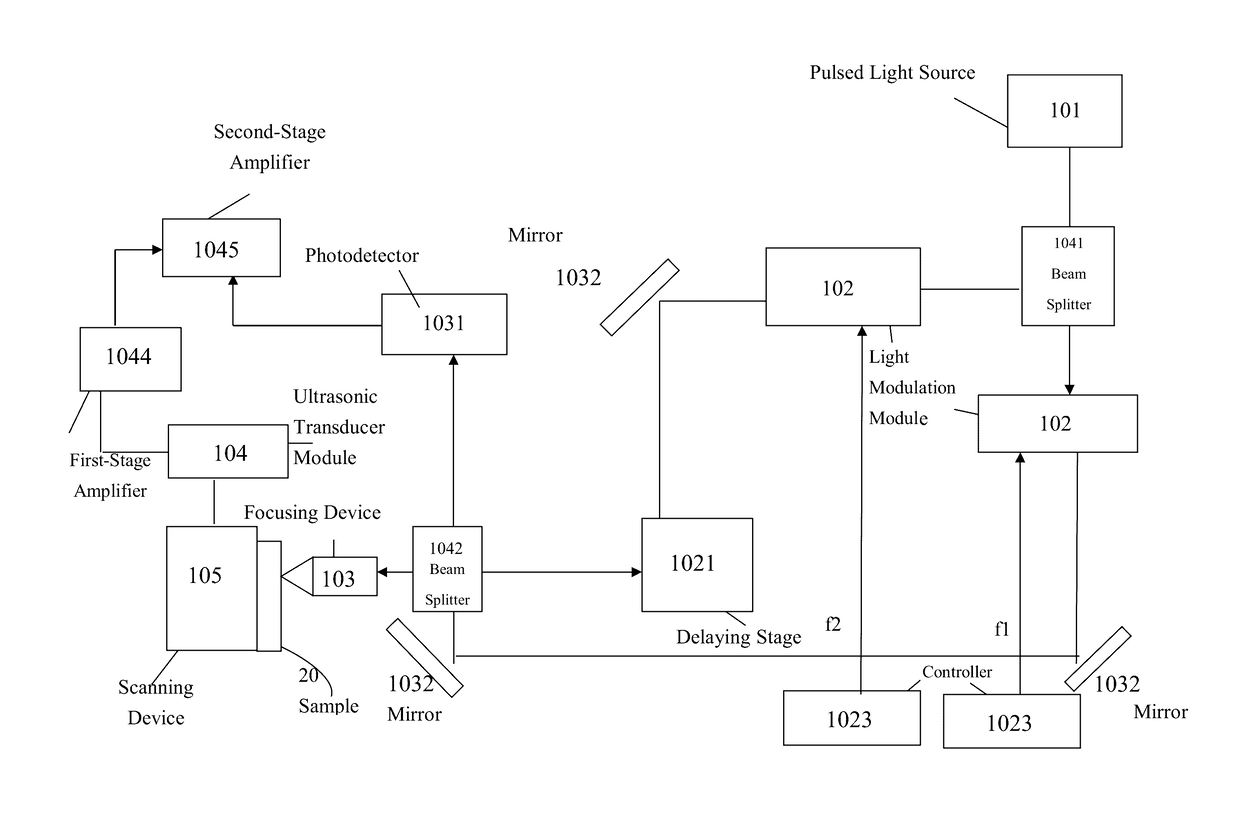Optical microscopy systems based on photoacoustic imaging
a technology of optical microscopy and photoacoustic imaging, applied in the direction of instruments, analysing fluid and analysing solids using sonic/ultrasonic/infrasonic waves. it can solve the problems of inability to achieve biomedical imaging methods, generate nonlinear signals that are often hidden in noise, and cannot be ultrasonically time-resolved
- Summary
- Abstract
- Description
- Claims
- Application Information
AI Technical Summary
Benefits of technology
Problems solved by technology
Method used
Image
Examples
examples
[0071]The examples below are non-limiting and are merely representative of various aspects and features of the present invention.
[0072]In the first example of the present disclosure, the fundamental frequency of the laser beam, which was amplitude modulated for pure sinusoidal modulation by using a loss modulation technique, was 500 kHz. By detecting the fundamental frequency and the harmonics of the fundamental frequency, 500 kHz and 1 MHz, images derived from single-photon and two-photon-absorption-induced photoacoustic effect were obtained.
[0073]As shown in FIG. 6, the pulsed light source 101 was a femtosecond laser (Tsunami Ti:Sapphire Laser, 800 nm femtosecond laser, pulse width ˜100 fs, repetition rate 80 MHz). Two acoustic optical modulators (AOMs) (Neos Technologies, 23080-3-.85-LTD) 102 were operated in CW mode and their modulation frequencies were adjusted by two controllers 1023 to be slightly different, 80.5 MHz and 81 MHz, respectively. A laser beam emitted from the pul...
PUM
| Property | Measurement | Unit |
|---|---|---|
| ultrasonic frequency | aaaaa | aaaaa |
| center frequency | aaaaa | aaaaa |
| penetration depth | aaaaa | aaaaa |
Abstract
Description
Claims
Application Information
 Login to View More
Login to View More - R&D
- Intellectual Property
- Life Sciences
- Materials
- Tech Scout
- Unparalleled Data Quality
- Higher Quality Content
- 60% Fewer Hallucinations
Browse by: Latest US Patents, China's latest patents, Technical Efficacy Thesaurus, Application Domain, Technology Topic, Popular Technical Reports.
© 2025 PatSnap. All rights reserved.Legal|Privacy policy|Modern Slavery Act Transparency Statement|Sitemap|About US| Contact US: help@patsnap.com



